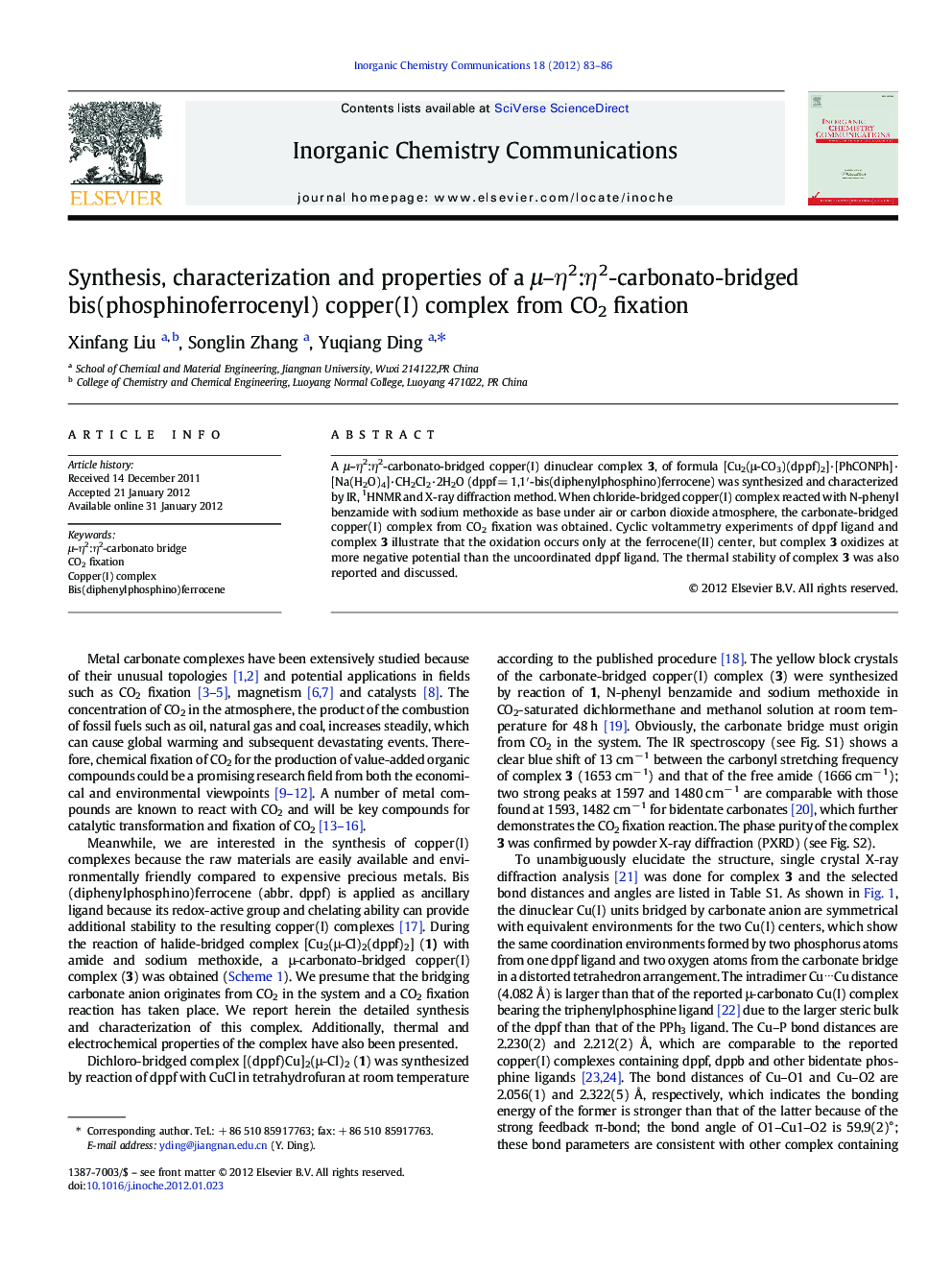| Article ID | Journal | Published Year | Pages | File Type |
|---|---|---|---|---|
| 1304209 | Inorganic Chemistry Communications | 2012 | 4 Pages |
A μ–η2:η2-carbonato-bridged copper(I) dinuclear complex 3, of formula [Cu2(μ-CO3)(dppf)2]·[PhCONPh]·[Na(H2O)4]·CH2Cl2·2H2O (dppf = 1,1′-bis(diphenylphosphino)ferrocene) was synthesized and characterized by IR, 1HNMR and X-ray diffraction method. When chloride-bridged copper(I) complex reacted with N-phenyl benzamide with sodium methoxide as base under air or carbon dioxide atmosphere, the carbonate-bridged copper(I) complex from CO2 fixation was obtained. Cyclic voltammetry experiments of dppf ligand and complex 3 illustrate that the oxidation occurs only at the ferrocene(II) center, but complex 3 oxidizes at more negative potential than the uncoordinated dppf ligand. The thermal stability of complex 3 was also reported and discussed.
Graphical abstractA μ-η2:η2-carbonato-bridged dimeric copper(I) complex (3) containing bis(diphenylphosphino)ferrocene ligand was synthesized from CO2 fixation. The reaction mechanism was discussed in detail. Complex 3 is thermally stable from room temperature to 124 °C despite some uncoordinated molecules; it is not sensitive to moisture and oxygen so it is stable in air for months. The reaction has provided a simple and cheap method for fixation of CO2.Figure optionsDownload full-size imageDownload as PowerPoint slideHighlights► We obtain a μ-carbonato-bridged copper(I) complex from CO2 fixation reaction. ► We discuss the reaction mechanism in detail. ► Cyclic voltammetry experiments are applied to determine electrochemical reversibility. ► Thermal decomposition and stability is characterized by TG.
